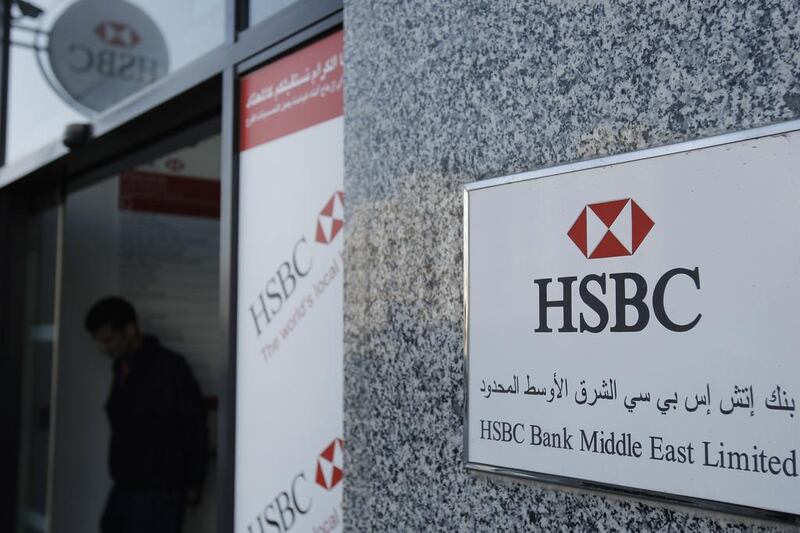A debt crunch is looming for Arabian Gulf countries and corporates, according to new research from global bank HSBC.
Sovereign, financial and corporate borrowers in the GCC must repay or refinance US$94 billion in bonds and loans this year and next, HSBC said, and their ability to do so is challenged by falling oil revenues, downgrades of regional creditworthiness and a squeeze on dollar liquidity in the region.
The region’s debt maturity profile continues to rise until 2020, the report said, with the UAE making up the biggest chunk of repayment or refinancing obligations in that period. The research is the first time HSBC has pulled together all regional medium-term debt estimates.
Simon Williams, HSBC’s chief economist for the Middle East, said the new economic realities of the low-oil era might limit policymakers’ options in meeting the obligations. “We remain confident that these funding gaps will be covered. However, expectations that they will be part-financed through the sale of sovereign US dollar debt [in some cases for the first time] will complicate efforts to refinance existing paper that matures over 2016-17.”
Aggregating available data suggests the outstanding stock of foreign currency-denominated bonds and syndicated loans stands at around $610bn, of which some $94bn will mature this year and next, and thus must be repaid or rolled over.
“The refinancing sum includes outstanding financial and corporate paper as well as debt issued by the sovereign, which is largely focused in UAE, Bahrain and Qatar,” Mr Williams added.
Meeting the maturities without dipping into sovereign wealth fund capital is likely to be more difficult in the current regional financial environment. The slump in oil prices is set to leave regional energy exporters with fiscal and current account shortfalls of $260bn and $135bn over in 2016 and 2017, equal to 8.7 per cent and 4.5 per debt of regional GDP, impacting policymakers’ room for financial manoeuvre, HSBC estimated.
“With the Gulf acting as a single credit market, however, the refinancing challenge will likely be much more broadly felt, with its impact compounded by tightening regional liquidity, rising rates and recent downgrades by international rating agencies. Close to half of the maturities over 2016-17 centre on the banking sector, suggesting any increase in costs at refinancing could quickly feed through into a broader monetary tightening,” the HSBC report said.
By sector, most of the debt is owed by financial institutions at 22 per cent, followed by sovereigns and energy borrowers with 19 per cent each.
All regional government are looking to bridge funding gaps over the current year by sovereign debt issues, with Saudi Arabia facing a budget deficit of about $90bn in 2016.
However, recent downgrades by international credit ratings agencies make issuance more difficult and expensive. Standard & Poor’s recently downgraded Saudi and Omani debt, and cut Bahrain debt to non-investment grade, the first time a Gulf country’s credit rating has effectively been labelled “junk”.
The UAE has generally fared better at the hands of the raters.
Late last week Fitch affirmed the ratings of five top UAE banks – National Bank of Abu Dhabi, FGB, Abu Dhabi Commercial Bank, Union National Bank and Emirates NBD – reflecting the “extremely high probability” of UAE government support in the event the financial situation deteriorates further.
“We view Abu Dhabi, and by extension the UAE, as a resilient economy, supported by robust growth, particularly through strong government spending infrastructure projects and an expanding non-oil sector. However, growth is moderating in response to lower oil prices,” Fitch said.
Another sign of increasing stress in regional economies came last week with a report by Reuters citing bankers’ concerns about a lack of dollar liquidity in some GCC financial markets. Bahrain and Oman were said to be the countries most affected as some foreign banks that supply dollars to the region are said to have cut back credit lines to reduce risks.
“Liquidity in the local currency is not a problem at all. It is growing. In customer deposits, it’s ample in Bahraini dinars,” Abdulkarim Bucheery, the chief executive of the Bahraini bank BBK, told Reuters.
“Liquidity in foreign currency, in dollars, is shrinking. And especially with the downgrade of the country, some internationals may find it timely to cut lines. If that happens, I’m sure liquidity will be under question.”
fkane@thenational.ae
Follow The National's Business section on Twitter





